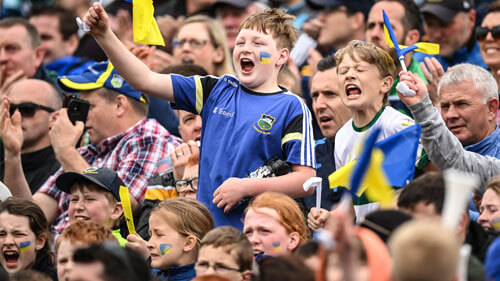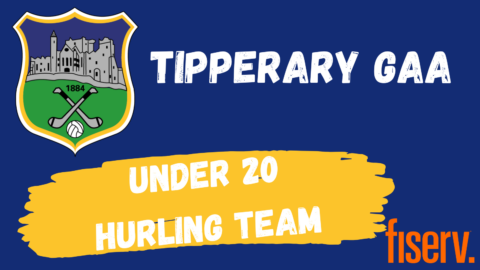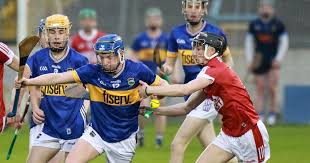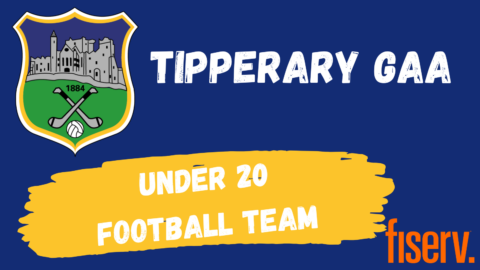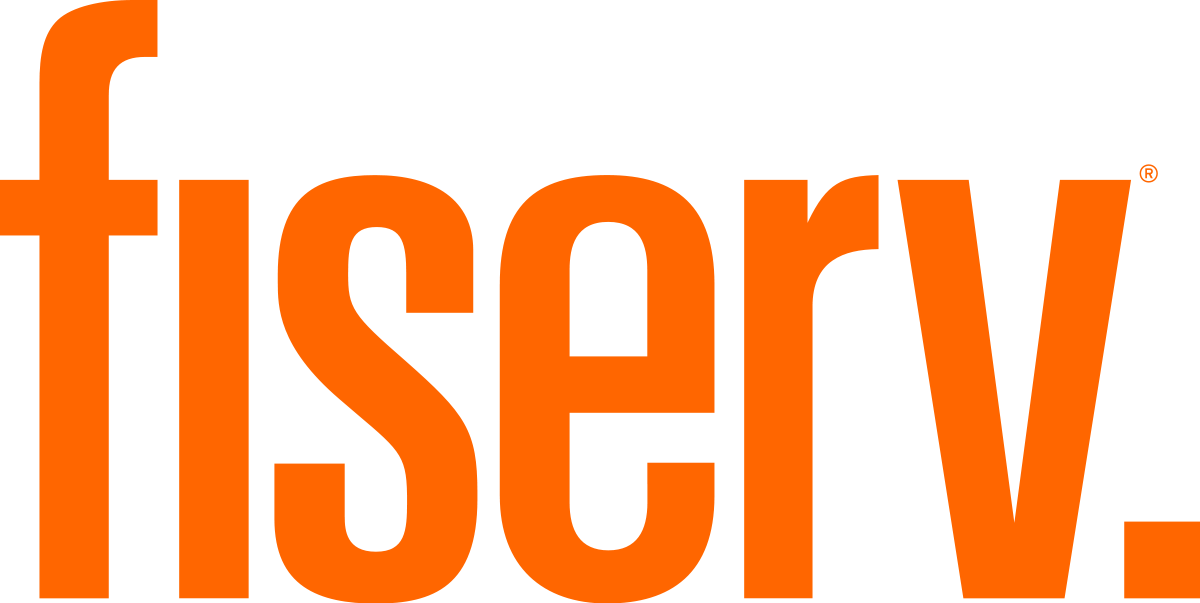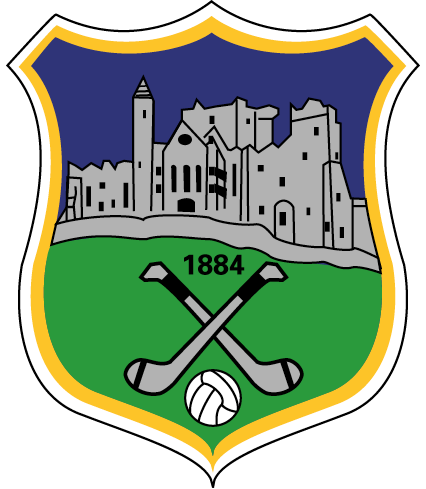It’s thirty-nine years since Templemore CBS enjoyed its greatest moment on the hurling field. 1978 was the year when Martin Bourke captained the side to Harty Cup and All Ireland glory, becoming the first Tipperary school ever to do so. That was a side which included future Tipperary hurlers such as Bobby Ryan, Pat McGrath, Timmy Stapleton, Peter Brennan, Jim Maher and others.
Almost four decades later now and a new bunch of lads from places like Loughmore, Borrisoleigh and other parts of the Templemore hinterland seek to follow in their footsteps. And there’s a genuine buzz building around this class of 2017.
On Wednesday of last week they faced off against neighbours, Thurles CBS, in a local derby at the Ragg. A huge crowd turned out for this Harty quarter-final in which Templemore justified expectations with a ten-point win. Excitement is building that – maybe – the thirty-nine year gap can finally be bridged.
It was an interesting game played in heavy conditions. Forget the ten-point margin at the end; this was a much tighter affair. There was only two in it at half time and with about six minutes remaining Thurles got a rallying goal to cut the lead to just five points. Immediately they had another goal chance but it was saved and that let-off was the spur for Templemore to ‘nail’ the game in the final minutes.
No fewer than eight of Tipperary’s minor heroes of last September were in action, spread over the two teams. Templemore had five from Liam Cahill’s panel and that advantage gave them a critical edge.
There was concern in Templemore in advance that Paddy Cadell would miss out through injury. It would have meant pulling Brian McGrath back to number six and an obvious weakening of the effort up front. Anyway, Cadell, definitely one to watch in the future, made the starting blocks and played a significant role, especially in the first half when his team faced the wind.
Brian McGrath played centre forward, though he covered a lot of ground in the middle third and exerted a critical influence in the second half. His two points from play were stamped with class. The first from out near the stand side was executed with minimal space and wrist economy – the type brother Noel has patented; the second was a monster strike from deep inside his own half.
I’d give a lot of credit to Thurles for battling this one all the way. They lacked nothing in effort and made Templemore graft for every possession. However, in their previous game against the Abbey one sensed that Thurles lacked a bit of cutting edge in the forward line and this was really exposed last week. For a lot of the game Darragh Woods (Holycross) was on a solo mission in attack. His free-taking in the first half especially was flawless and kept his side in touch; he scored all the Thurles points over the hour, with just two coming from open play. That stat alone sums up Thurles’ limitations.
By contrast there’s a real threat in this Templemore attack. Watch out for a Borrisoleigh lad called Ray McCormack – a clone of Dan. He finished their first goal after nifty work by Andrew Ormonde in the right corner set him up; he then turned supplier for David O’Shea for the second goal; the third came late in the hour when he barged through (suspicion of steps?) and sent in a pile-driver that goalie, Ewan Bourke, could only parry.
The physical strength of that Templemore attack is impressive with wing forwards, Jerry Kelly and David O’Shea, really catching the eye. Lyndon Fairbrother has known potential on the inside line and Andrew Ormonde in the corner earned compliments too in this win.
Overall it’s a formidable looking Templemore outfit, which will be fancied in their semi-final against Nenagh CBS. The latter needed extra time to see off De Le Salle of Waterford, Jake Morris playing a critical role according to reports. Anyway it will be another keenly watched Tipperary derby.
For Thurles it was a disappointing, though not unexpected exit. They’re drawing players from well outside their catchment area so expect them to remain competitive in the Harty. With a bit of luck they might have taken this one to the proverbial ‘wire’. They were close to goaling just before half time when the Templemore defence did well to smother Anthony McKelvey. They might have used substitute Odhran Quirke (Clonoulty) earlier too; he got their goal when introduced and seemed well suited to the heavy conditions.
Meanwhile there’s a new pressure group on the GAA landscape. First it was the Gaelic Players Association and now we have the Club Players Association. What next? The Umpires Association? Or the Water Carriers Association?
I openly admit to skepticism at the emergence of these new lobby groups, or pressure groups, or whatever label you wish to apply. It’s not that the club players don’t have a gripe. Clearly the club player has been the poor relation for much of the history of the association. But do we need yet another organization being set up to address this issue? I would have thought that there are enough bodies and boards in the GAA at present without adding yet another layer.
I find it strange that this issue suddenly becomes important now because it’s been around for ages. I can recall highlighting the plight of the club player back twenty/thirty years ago and the scandal of poor fixture structures back then. I actually got tired of addressing the issue feeling I was becoming repetitive and nobody was really interested in change anyway.
Listening to and reading the coverage of the launch of the CPA last week one couldn’t avoid the feeling that here we have a group who love the ‘soap-box’ opportunity with all the attendant media profile that goes with it. When you drilled down through the public statements that emerged you got a sense of people who know there’s a problem but haven’t an idea about a solution.
Because here’s the kernel of the matter: this is a complex, multi-faceted problem that won’t be easily fixed. Just like homelessness or the health service, if there was an easy solution it would have been embraced years ago. Ask anyone who has grappled with fixture making and you’ll quickly realise the complexity of the problem given our two codes with multi-grades, overlapping players and the clash of club and county, very demanding county managers, not to mention exam problems and many others.
Yet you read the following from Martin McHugh: ‘If you go into a sixth year class and give them an hour to do it, they’ll sort it out. That’s how easy it is’. Wow! What about those sixth year Einsteins up in Donegal just waiting to be asked to solve all our problems!
When you hear statements like that then you know for certain that these guys really haven’t a clue. You see it’s very easy to highlight the problems. You have club players training for ages awaiting games that might or might not happen depending on inter-county outcomes. It’s impossible to plan holidays or other events as the season drags on and the ratio of training sessions to championship games is badly skewed. Club players want games but there’s no chance of action because one team has a lad on a county panel and the all-powerful county manager won’t allow him play. So you play a couple of games in April, then maybe there’s one sneaked in sometime in the summer and otherwise everything stalls until late September or October.
That’s the problem, but what’s the solution? In fairness to Paddy Stapleton he’s not the Martin McHugh type. He’s thought about and experienced the problems and he’s put forward his solution. He favours a total separation of club and county. He’d have the All Ireland final played off by mid July and then August, September and October would be exclusively for club action. What are the chances of that getting through? Nil I’d say. Just look at the reaction to Pauric Duffy’s proposal to move the All Ireland finals forward a few weeks and you can guess at the reaction to Paddy Stapleton’s proposal. Besides I’m not sure Paddy has factored in the dual-code aspect and the loss of profile for the games in key months like August and September.
I suspect it is a lot of small changes coupled with improved organization which will eventually bring some sanity to club fixtures rather than some very dramatic change as suggested by Paddy Stapleton.
You see if the All Irelands were the sole problem then surely counties who make little progress in the inter-county championships would have no issue. Yet you look at Longford in 2016. They exited the football championship on July 16 yet didn’t play their county final until October 16 the same day as Tipperary’s hurling final. Or how about Wicklow? Out of the All Ireland football championship on June 18, yet their county football final wasn’t played until October 9. Leitrim played their football final the same day despite exiting the All Ireland qualifiers on July 2. Anyway we await the CPA’s solutions.
P.S. Maybe a better gender balance in the association will bring some sanity to fixtures. In that regard the Galtee Rvs. club in Bansha is well ahead of the curve as they become one of the first in the country to appoint a female chairperson. Congratulations to Katie Burke on her elevation.


